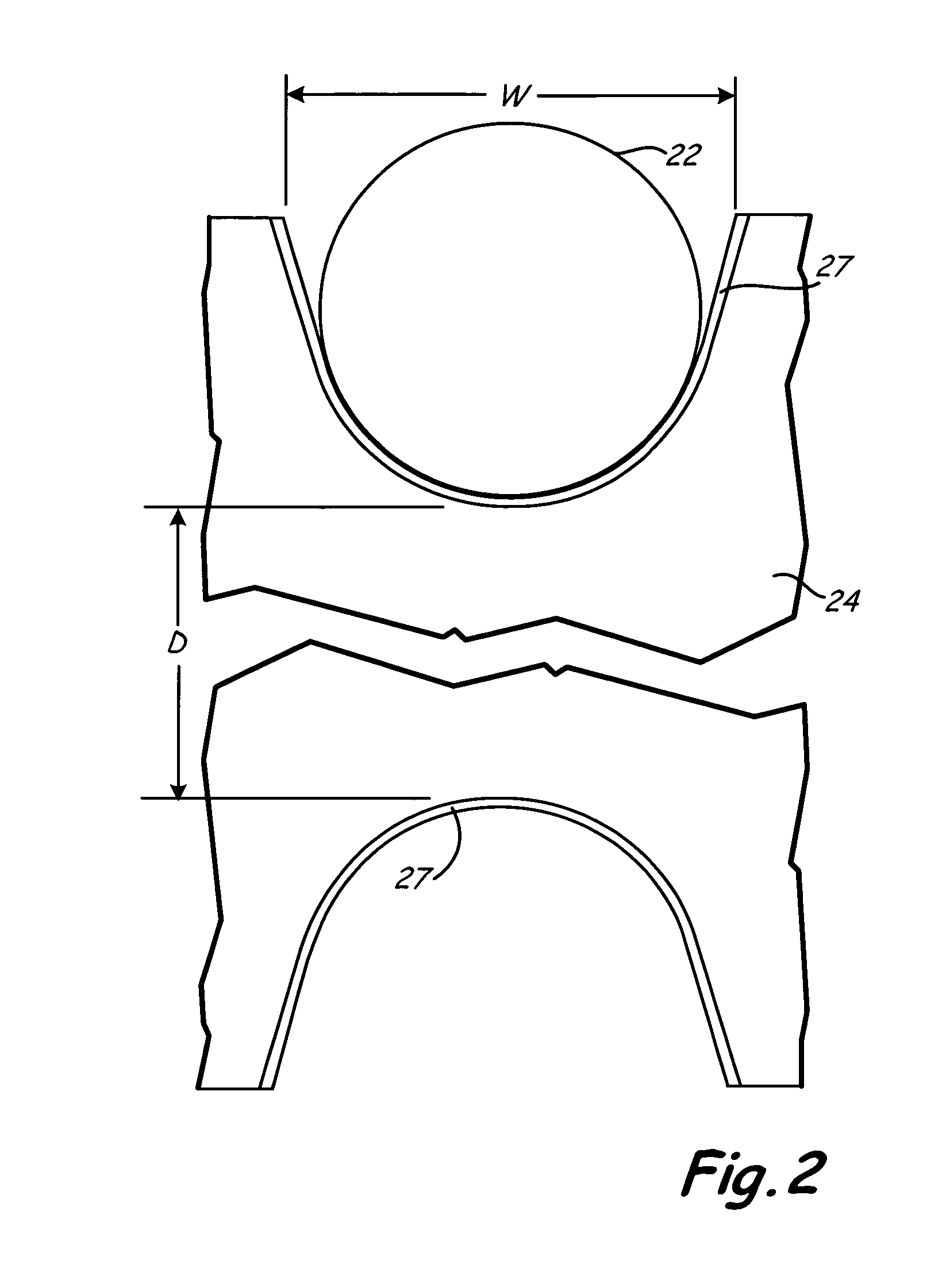Wear and friction control of metal rope and sheave interfaces
a technology of friction control and metal rope, applied in the field of elevator systems, can solve the problems of traction force between the rope and the sheave, wear and friction of the sheave and the wire rope, and limitations on their us
- Summary
- Abstract
- Description
- Claims
- Application Information
AI Technical Summary
Benefits of technology
Problems solved by technology
Method used
Image
Examples
Embodiment Construction
[0013]As shown in FIG. 1, a traction elevator system 12 includes a car 14, a counterweight 16, a fraction drive 18, and a machine or motor drive unit 20. The traction drive 18 includes a tension member 22, interconnecting the car 14 and the counterweight 16, and a traction sheave 24. Typically most sheaves are fabricated from cast iron, and currently Grade 40 cast iron is in use, which means that it has a strength of 40 KSI. This system as shown is a 1:1 rope system. The invention does not depend on the specific rope system but functions to repair sheave surfaces in any rope system, such as 2:1 rope systems and any other elevator system where sheaves and ropes or other tension members are employed.
[0014]To achieve the desired arrangement of the ropes in the hoistway, the elevator system could include one or more deflector sheaves. The ropes engage the deflector sheave, but unlike the traction sheave do not drive the ropes. FIG. 3 illustrates deflector sheave 37 that functions to div...
PUM
 Login to View More
Login to View More Abstract
Description
Claims
Application Information
 Login to View More
Login to View More - R&D
- Intellectual Property
- Life Sciences
- Materials
- Tech Scout
- Unparalleled Data Quality
- Higher Quality Content
- 60% Fewer Hallucinations
Browse by: Latest US Patents, China's latest patents, Technical Efficacy Thesaurus, Application Domain, Technology Topic, Popular Technical Reports.
© 2025 PatSnap. All rights reserved.Legal|Privacy policy|Modern Slavery Act Transparency Statement|Sitemap|About US| Contact US: help@patsnap.com



